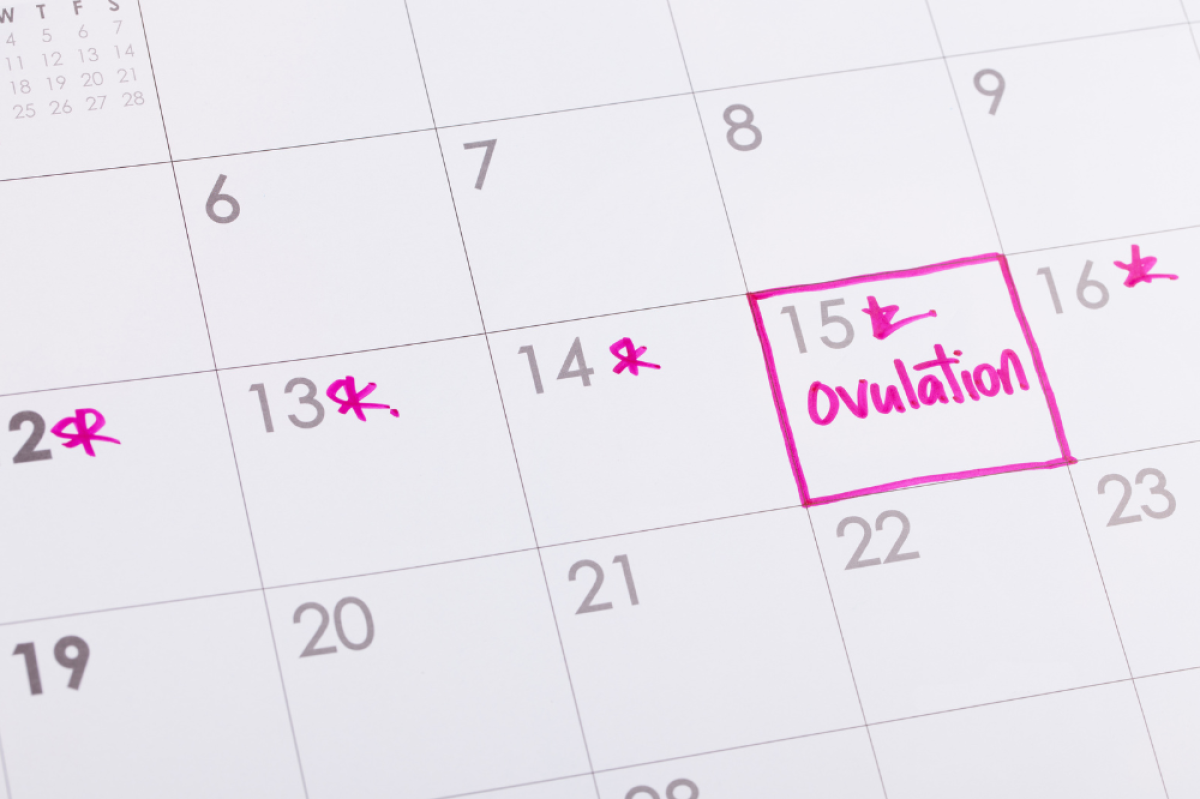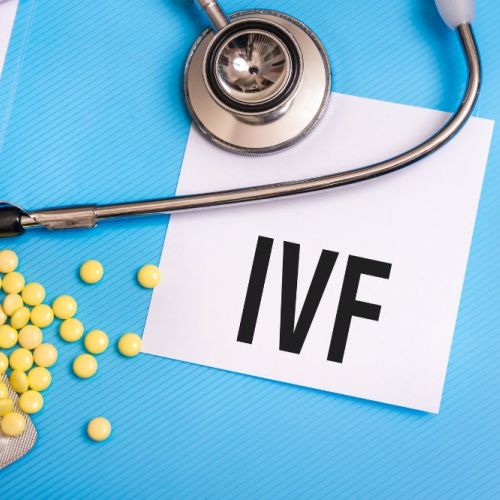What Does Peak Fertility Mean?

When you’re trying to get pregnant, you may hear a lot of terms that are confusing to you. It’s not unusual for people who are struggling to get pregnant to have questions such as:
- What is my fertility window?
- What does peak fertility mean?
- What is ovulation and how do I know when I’m ovulating?
The team at the Center for Reproductive Health understands how stressful infertility can be. The staff is knowledgeable and compassionate, and they’re available to work with you to answer these and other questions to help you to understand what factors may help you improve your ability to get pregnant.
Peak Fertility
The fertility window are the days you’re most likely to get pregnant. Your fertility window is a range of days about five days before ovulation during which the body produces an increased amount of estrogen. During this time, sperm can stay in your body until you ovulate. Peak fertility refers to the two days in which you’re most likely to successfully conceive, which include the day of ovulation and the day before ovulation.
Knowing your fertility window helps you target the best time to have unprotected sex if you’re hoping to get pregnant. The days you’re considered most fertile happen only a few days a month.
The Menstrual Cycle
Understanding what days you’re most fertile is important information to have if you’re trying to conceive. A woman’s menstrual cycle is the body’s way of preparing to get pregnant. The first day of your period is considered the first day of your cycle. A typical cycle lasts about 28 days but can range anywhere from 21 to 35 days. There are many hormone fluctuations during this time.
Ovulation refers to the release of an egg from an ovary, which usually occurs about 12 to 14 days into your cycle. The timing of ovulation is a key factor in your fertility window.
Predicting Ovulation
The day you ovulate can vary from month to month, and it’s not always easy to pinpoint, especially if your periods are irregular. There are a few ways to attempt to predict ovulation. Ovulation predictor kits are sold in drugstores and can detect luteinizing hormone in your urine 24 to 48 hours before ovulation.
Another approach is the calendar method. If you have regular periods, track the start and end dates of your period for several months to determine the typical length of your cycle. Plan to have sex about halfway through your cycle.
Your basal body temperature may help you determine when you’re ovulating. If you track your temperature daily, you’ll notice your temperature goes up slightly in the middle of your cycle, which can help you to pinpoint your most fertile days. Charting your cervical mucous may also shed some light on when you’re ovulating, because it becomes clear and slippery when you’re ovulating.
Reach out to the experts at the Center for Reproductive Health to find out more about pinpointing your fertility window and peak fertility.
Eliran Mor, MD
Reproductive Endocrinologist located in Encino, Santa Monica, Valencia & West Hollywood, CA
FAQ
What does a reproductive endocrinologist and infertility specialist do?
Reproductive endocrinology and Infertility is a sub-specialty of Obstetrics and Gynecology. In addition to managing medical and surgical treatment of disorders of the female reproductive tract, reproductive endocrinologist and infertility (REI) specialists undergo additional years of training to provide fertility treatments using assisted reproductive technology (ART) such as in vitro fertilization.
Reproductive endocrinologists receive board certification by the American Board of Obstetrics and Gynecology in both Obstetrics and Gynecology and Reproductive Endocrinology and Infertility.
When should I see an REI specialist?
In general, patients should consider consulting with an REI specialist after one year of trying unsuccessfully to achieve pregnancy. The chance of conceiving every month is around 20%, therefore after a full year of trying approximately 15% of couples will still not have achieved a pregnancy.
However, if a woman is over the age of 35 it would be reasonable to see a fertility specialist earlier, typically after 6 months of trying.
Other candidates to seek earlier treatment are women who have irregular menses, endometriosis, fibroids, polycystic ovary syndrome (PCOS), women who have had 2 or more miscarriages, or problems with the fallopian tubes (prior ectopic pregnancy).
What are the reasons we are having trouble conceiving?
Approximately 1/3 of the time cause for infertility is a female factor, 1/3 of the time a male factor, and the remaining 1/3 a couples’ factor.
At CCRH, we emphasize the importance of establishing a correct diagnosis. Both partners undergo a comprehensive evaluation including a medical history and physical exam.
Furthremore, the woman’s ovarian reserve is assessed with a pelvic ultrasound and a hormonal profile. A hysterosalpingogram (HSG) will confirm fallopian tube patency and the uterine cavity is free of intracavitary lesions. A semen analysis is also obtained to evaluate for concentration, motility, and morphology of the sperm.
Additional work up is then individualized to direct the best possible treatment option for each couple.
What is IVF? What is the process like?
In vitro fertilization (IVF) is the process that involves fertilization of an egg outside of a woman’s body.
The process starts with fertility drugs prescribed to help stimulate egg development. In your natural cycle, your body is only able to grow one dominant egg, but with stimulation medication we can recruit multiple eggs to continue to grow. After about 8-10 days of stimulation, the eggs are surgically retrieved and then fertilized with sperm in a specialized laboratory. Fertilized eggs are then cultured under a strictly controlled environment within specialized incubators in the IVF laboratory for 3-5 days while they develop as embryos. Finally, embryos (or an embryo) are transferred into the uterine cavity for implantation.
Should I have IVF?
Before deciding if IVF is the right choice, it’s important to sit down with an REI specialist to discuss available treatment options. For some people, other methods such as fertility drugs, intrauterine insemination (IUI) may be the best first choice treatment. At CCRH, we believe each individual couple is unique and not everyone needs IVF.
Is the IVF procedure painful?
While not painful, the fertility medications may some side effects including headaches, hot flashes, mood swings, and bloating. The injection sites may also bruise.
Will IVF guarantee a baby?
Unfortunately, no. Many people think once they start IVF it’s a matter of time that they will be pregnant and have a baby. But according to national statistics per the Society of Assisted Reproduction (SART), on average 40% of assisted reproduction cycles achieve live births in women under age 35. The chances of success then continue to decrease with advancing age.
At CCRH, we employ only evidence-based interventions to ensure patient safety and optimal outcome. While we cannot guarantee a baby, we guarantee that you will receive the best, most advanced, personalized care to help you maximize your chance of a baby.
What is the success rate for IVF?
The average IVF success rate (success measured in live birth rate) using one’s own eggs begins to drop around age 35 and then rapidly after age 40. This is due to the decline in egg quantity and egg quality as a woman ages.
Our clinic’s success rate consistently beats the national average year after year.
Do insurance plans cover infertility treatment? How much does IVF cost?
Individual insurance plans often do not have any coverage for infertility treatments. If you have a group plan, you can call members services to see if they have coverage for infertility (including consultation/workup and IVF).
After your consultation with our REI specialist, one of our dedicated account managers with sit with you to go over the cost of treatment.




